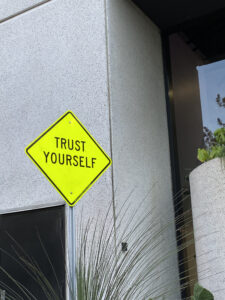David Trend
Can robots be taught to imagine? Google’s DeepMind artificial intelligence group is doing just that –– developing computer versions of what many consider humanity’s quintessential trait. The software world long has pursued sentient consciousness as its holy grail. But until now, it’s only been found in science fiction movies like A.I., Ex Machina, and Transcendence. DeepMind engineers say they have cracked the code by combining two kinds of machine-learning. The first is linear, which is nothing new, with the computer applying a predefined algorithm over-and-over till it finds answers and then remembering them. In the second more radical approach, the computer tries many algorithms to find which work best, and then changes the very way it approaches problems. Combining the purely linear with a more systemic approach, DeepMind’s “Imagination-Augmented Agent” mimics intuitive learning in a way prior software hasn’t. It’s not exactlythe same as human imagination, but it comes closer than ever before to what neuroscientists say the brain does.

While robotic imagination may be improving, human thought isn’t faring as well. Most people feel uncreative and without inspiration, as discussed in earlier chapters. Corporations say innovation is withering as well. Novelist Ursula Le Guin recently observed that, “In America today imagination is generally looked on as something that might be useful when the TV is out of order. Poetry and plays have no relation to practical politics. Novels are for students, housewives, and other people who don’t work.”[i]Beyond the abandonment of a creative genre or two, American society also is undergoing a wholesale commodification of imagination itself. Disney is most famous for this, its “Imagineering” (imagination + engineering) brand one of the most viciously protected anywhere. But hundreds of companies evoke imagination to conjure an aura of specialness ––seen in promotions like Bombay Safire’s “Infused with Imagination,” GE’s “Imagination at Work,” Electrolux’s “Power to Capture Imagination,” Lego’s “Imagine,” Microsoft’s “Imagine Academy,” Nestle’s “Feed your Imagination,” Samsung’s “Imagine,” and Sony’s “Made of Imagination.”
The connection of imagination to commercial products reflects the powerful linkage of purchasing to consumer self-image. Expressing oneself through buying brings a passing feeling of agency, maybe even of accomplishment. Some critics say that shopping is more meaningful than voting for many Americans. Henry A. Giroux speaks of “disimagination” in describing how public consciousness is overwritten in this process, as people lose abilities to imagine on their own. To Giroux “The power to reimagine, doubt, and think critically no longer seems possible in a society in which self-interest has become the ‘only mode of force in human life and competition’ and ‘the most efficient and socially beneficial way for that force to express itself.’” Going even further, Giroux links disimagination to a rising collective amnesia, stating “What I have called the violence of organized forgetting signals how contemporary politics are those in which emotion triumphs over reason, and spectacle over truth, thereby erasing history by producing an endless flow of fragmented and disingenuous knowledge.”
Imagination can be seen positively, of course. With this in mind, much of this chapter exploresways people can envision a better and more just world. Obviously this might take a little encouragement in an age of disimagination. But it’s far from impossible. Most definitions describe imagination as the mental process behind creativity, as seen in the Oxford Dictionary: “Imagination: The faculty or action of forming new ideas, or images or concepts of external objects not present to the senses.The ability of the mind to be creative or resourceful.” Put another way, creativity is imagination actualized for a purpose –– generally assumed a positive one. As stated by a leading expert in the field, “Creativity is putting your imagination to work. It’s applied imagination.” Dig a little deeper into this lexicon, and one finds that very problem that worries Le Guin and Giroux. A quick look at Roget’s Thesauruslists such synonyms for “imaginative” as “dreamy,” “fanciful,” “fantastic,” “quixotic,” “romantic, and “whimsical.” Nice as these sound, such vaporous associations equate imagination with the same romantic idealism and inconsequentiality dogging creativity. This explains why advertisers seem so keen on imagination. As one marketing firm put it, “We don’t see imagining as a real task. It’s an enjoyable game. By asking a prospect to imagine something, you bypass that critical part that throws up objections, and sneak into their mind through the back door of the imagination.”
How about seeing imagination differently? Maybe as a roadmap for one’s life or future? Or a way to imagine important people in one’s life? Perhaps even a vision for community, country, and the larger world? After all, isn’t society itself an imaginary construct? Doesn’t everyone want to make it better? To Le Guin, “To train the mind to take off from immediate reality and return to it with new understanding and new strength, nothing quite equals poem and story.” She concludes that “Human beings have always joined in groups to imagine how best to live and help one another carry out the plan. The essential function of human community is to arrive at some agreement on what we need, what life ought to be, what we want our children to learn, and then to collaborate in learning and teaching so that we and they can go on the way we think is the right way.”
















